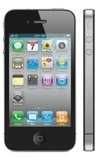Apple has filed a patent (number 8,259,017) for a hybrid antenna for electronic devices.
Per the patent, the hybrid antenna may include a slot antenna structure and a planar inverted-F antenna structure. The planar inverted-F antenna structure may be formed from traces on a flex circuit substrate. A backside trace may form a series capacitance for the planar inverted-F antenna structure.
The antenna slot may have a perimeter that is defined by the location of conductive structures such as flex circuits, metal housing structures, a conductive bezel, printed circuit board ground conductors, and electrical components. Springs may be used in electrically connecting these conductive elements. A spring-loaded pin may be used as part of an antenna feed conductor. The pin may connect a transmission line path on a printed circuit board to the planar inverted-F antenna structure while allowing the planar inverted-F antenna structure to be removed from the device for rework or repair.
Here’s Apple’s background and summary of the invention: “Handheld electronic devices and other portable electronic devices are becoming increasingly popular. Examples of handheld devices include handheld computers, cellular telephones, media players, and hybrid devices that include the functionality of multiple devices of this type. Popular portable electronic devices that are somewhat larger than traditional handheld electronic devices include laptop computers and tablet computers.
“Due in part to their mobile nature, portable electronic devices are often provided with wireless communications capabilities. For example, handheld electronic devices may use long-range wireless communications to communicate with wireless base stations. Cellular telephones and other devices with cellular capabilities may communicate using cellular telephone bands at 850 MHz, 900 MHz, 1800 MHz, and 1900 MHz. Portable electronic devices may also use short-range wireless communications links. For example, portable electronic devices may communicate using the Wi-Fi.RTM. (IEEE 802.11) bands at 2.4 GHz and 5.0 GHz and the Bluetooth.RTM. band at 2.4 GHz. Data communications are also possible at 2100 MHz.
“To satisfy consumer demand for small form factor wireless devices, manufacturers are continually striving to reduce the size of components that are used in these devices while providing enhanced functionality. Significant enhancements may be difficult to implement, however, particularly in devices in which size and weight are taken into consideration. For example, it can be particularly challenging to form antennas that operate in desired communications bands while fitting the antennas within the case of a compact portable electronic device. It would therefore be desirable to be able to provide portable electronic devices with improved wireless communications capabilities.
“A portable electronic device such as a handheld electronic device is provided that may include a hybrid antenna. The handheld electronic device may be formed from two portions. A first portion may include components such as a display and a touch sensor. A second portion may include components such as a camera, printed circuit boards, a battery, flex circuits, a subscriber identity module structure, an audio jack, and a conductive bezel.
“The hybrid antenna may include a slot antenna structure and a planar inverted-F antenna structure. The planar inverted-F antenna structure may be formed from traces on a flex circuit substrate. A backside trace that overlaps the other traces on the flex circuit substrate may form a series capacitance for the planar inverted-F antenna structure.
“The antenna slot may have a perimeter that is defined by the location of conductive structures such as flex circuits, metal housing structures, a conductive bezel, printed circuit board conductive regions (e.g., layers of metal and other ground conductors), and electrical components. Isolation elements may be used to prevent certain conductive structures from affecting the slot perimeter when the antenna handles radio-frequency signals.
“Springs may be used in electrically connecting conductive elements associated with the antenna. For example, a spring may be used to connect a conductive midplate that forms part of the first portion of the device to the conductive bezel. A second spring may be used to electrically connect a transmission line ground conductor on a printed circuit board to the conductive bezel. The edges of the printed circuit board and midplate may be aligned and may help define the antenna slot edge.
“A spring-loaded pin may be used as part of an antenna feed conductor. The pin may connect a transmission line path on a printed circuit board to the planar inverted-F antenna structure. The pin may make contact with the printed circuit board at a pad that allows the planar inverted-F antenna structure to be removed from the device for rework or repair without damaging the printed circuit board.”
The inventors are Robert W. Schlub, Qingxiang Li, Juan Zavala and Robert J. Hill.



